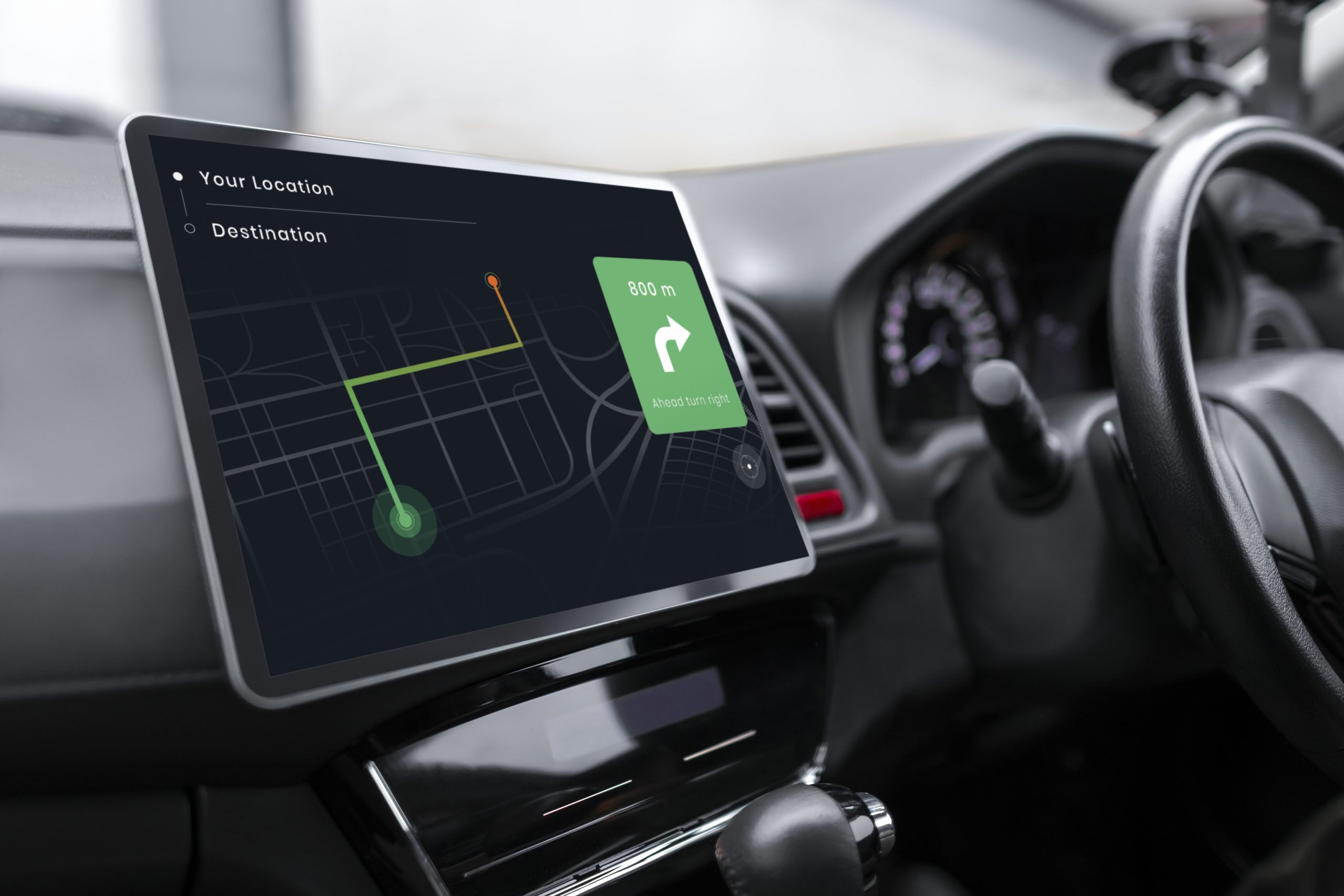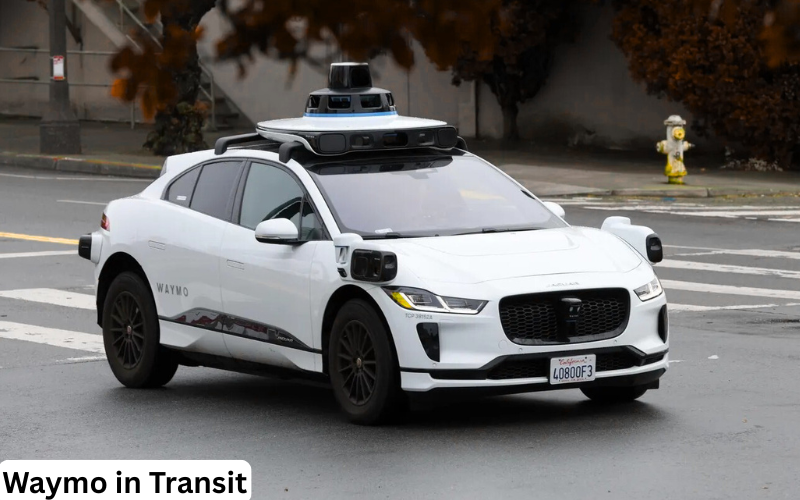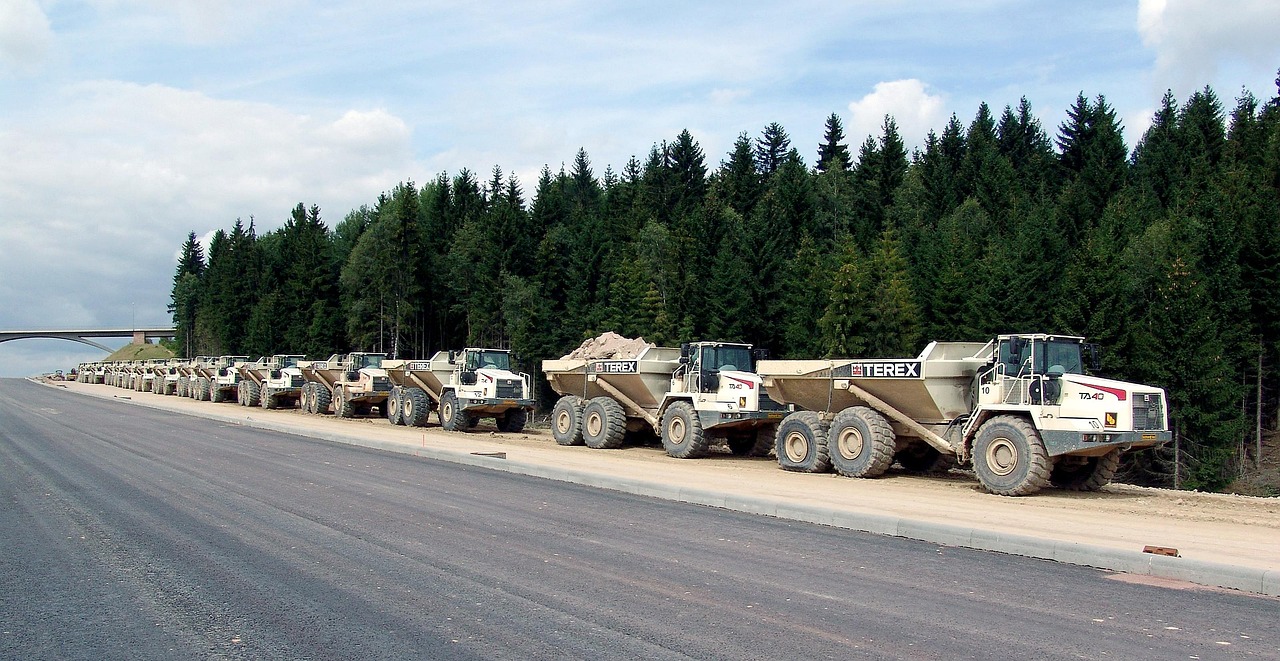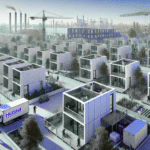The Impact of Robotaxi Technology on Transportation Engineering

The rise of robotaxi technology is reshaping the landscape of transportation engineering, promising to revolutionize urban mobility with autonomous, driverless vehicles. These self-driving taxis, equipped with advanced sensors, artificial intelligence (AI), and machine learning, aim to improve safety, reduce congestion, and lower transportation costs. For students and professionals in the construction and transportation sectors, understanding the multifaceted impact of robotaxis is crucial as they influence infrastructure design, urban planning, and traffic management.
What Are Robotaxis?
What is a Robotaxi?
A robotaxi is a fully autonomous vehicle designed to provide taxi services without a human driver. These vehicles use a combination of LiDAR, radar, cameras, GPS, and AI to navigate public roads safely and efficiently with minimal or no human intervention.
How Do Robotaxis Work?
Sensors and Cameras: Collect real-time data about the environment.
AI and Machine Learning: Process sensor data to make driving decisions and improve over time.
Geofencing: Limits operation to mapped areas for safety and consistency.
Human Override: Allows remote human control if necessary.
Tesla, Waymo, and Cruise are among the leading companies developing robotaxi fleets, each using slightly different sensor technologies and operational strategies.
The Role of Robotaxis in Urban Transportation Engineering
Impact on Urban Transit Systems
Robotaxis promise to transform urban transit by offering:
Increased accessibility to transportation services.
Reduced reliance on personal car ownership.
Lower transportation costs due to the elimination of human drivers.
Potential reduction in traffic congestion by optimizing ride-sharing and vehicle usage.
However, integrating robotaxis with existing public transit raises challenges, including potential competition with buses and trains and the need for coordinated infrastructure planning.
Infrastructure Adaptations for Robotaxis
Transportation engineering must account for:
Smart road infrastructure equipped with sensors and communication units for vehicle-to-infrastructure (V2I) interaction.
Redesign of traffic signals and intersections to accommodate autonomous navigation.
Dedicated lanes or zones for robotaxi operations to improve flow and safety.
Charging stations for electric robotaxi fleets, impacting urban energy infrastructure.
Safety and Efficiency Considerations
Safety Benefits of Robotaxis
Reduction in human error: Since human mistakes cause the majority of accidents, robotaxis can potentially lower accident rates by relying on AI and sensor fusion.
Consistent decision-making: AI systems do not suffer fatigue or distraction.
Advanced hazard detection: Combining LiDAR, radar, and cameras enhances object recognition and reaction times.
Challenges in Safety and Reliability
Sensor limitations: Camera-only systems, like Tesla's, may struggle in poor visibility conditions.
Cybersecurity risks: Autonomous vehicles are vulnerable to hacking, which could compromise safety or privacy.
Public trust: Widespread adoption depends on overcoming skepticism about autonomous vehicle reliability and safety.
Economic and Social Impacts on Transportation Engineering
Job Market Disruption
The shift to robotaxis threatens to reduce frontline driving jobs by up to 76%, impacting taxi drivers, ride-hailing drivers, and related professions.
Environmental Impact
Reduced emissions: Robotaxis, often electric, can lower urban pollution.
Optimized traffic flow: Shared autonomous vehicles can reduce the total number of cars on the road, decreasing congestion and emissions.
Table: Comparison of Robotaxi Sensor Technologies
| Sensor Type | Advantages | Limitations | Example Companies Using It |
|---|---|---|---|
| LiDAR | Accurate 3D mapping, reliable in various conditions | Expensive, complex integration | Waymo, Cruise |
| Radar | Good for detecting objects at long range, works in poor weather | Less detailed imagery | Waymo, Cruise |
| Cameras | High-resolution visual data, cost-effective | Poor in low light and adverse weather | Tesla (camera-only system) |
| Sensor Fusion (LiDAR + Radar + Cameras) | Combines strengths, improves safety | Complex data processing required | Most leading robotaxi developers |
Integration with Smart City Infrastructure
Robotaxis are part of a broader smart transportation system that includes:
Vehicle-to-vehicle (V2V) communication for collision avoidance.
Vehicle-to-infrastructure (V2I) communication for traffic signal optimization.
Real-time traffic monitoring to improve flow and reduce congestion.
Data sharing for urban planning and emergency response.
This integration requires collaboration between transportation engineers, city planners, and technology developers to ensure seamless operation.
Related Questions
How will robotaxis affect traffic congestion?
Robotaxis can reduce congestion by promoting ride-sharing and optimizing routes, but if poorly managed, they could increase vehicle miles traveled due to empty repositioning trips.
What are the main technological challenges for robotaxis?
Key challenges include sensor reliability in all weather conditions, cybersecurity threats, regulatory compliance, and public acceptance.
How do robotaxis influence urban space use?
By reducing the need for parking spaces and personal vehicles, robotaxis can free up urban land for other uses such as green spaces or pedestrian zones.

Regulatory Landscape and Challenges for Robotaxis
How Are Robotaxis Regulated Globally?
The regulation of robotaxis varies significantly across regions, reflecting different priorities, technological maturity, and public attitudes.
| Region | Regulatory Approach | Key Characteristics | Impact on Robotaxi Deployment |
|---|---|---|---|
| United States | State-level regulation with limited federal oversight | Varied rules by state; some allow fully driverless operation (e.g., Arizona, Texas), others are more cautious (California) | Enables rapid deployment in some states but creates patchwork legal environment, complicating expansion |
| Europe | Cautious, safety-focused, and fragmented by member states | Emphasis on safety, equity, and inclusivity; rigorous type-approval process; slower adoption due to conservative permits | Slower commercial rollout; focus on public transport integration and long-haul freight automation |
| China | Hands-on, early regulation with strict operational rules | Mandates safety operators or remote operators with skill tests; detailed accident reporting requirements | Accelerated deployment with clear operational limits; leads global in commercial robotaxi services |
Europe’s regulatory framework prioritizes public-private collaboration with a focus on safety and inclusivity but tends to slow innovation due to cautious permit issuance and fragmented policies among member states. In contrast, the U.S. benefits from more permissive state-level regulations, allowing companies like Waymo and Cruise to operate driverless fleets commercially in select cities, though this creates a complex compliance landscape for operators. China’s approach is proactive and strict, requiring remote operators at a capped ratio and detailed reporting, which has helped it become a leader in robotaxi deployment.
What Are the Current Regulatory Challenges?
Fragmented Jurisdictions: Different rules across states, cities, and countries complicate compliance and scaling.
Safety and Liability: Ambiguities remain about who is responsible in accidents involving robotaxis.
Data Privacy and Cybersecurity: Regulations lag behind in protecting user data and preventing hacking.
Labor and Social Equity: Balancing automation benefits with job displacement concerns and equitable access.
California’s Senate Bill 915 exemplifies efforts to empower local governments to impose stricter robotaxi regulations, responding to recent high-profile incidents involving autonomous vehicles. However, the overlapping responsibilities among agencies—such as the DMV, Public Utilities Commission, and Department of Transportation—create regulatory complexity.
Public Acceptance and Social Impact
How Does Public Perception Affect Robotaxi Adoption?
Public trust remains a significant barrier. A 2022 Pew Research Center survey found that 63% of U.S. adults would probably not ride in an autonomous vehicle, and 45% were uncomfortable sharing the road with one. Concerns include:
Safety fears due to accidents and technology failures.
Distrust in AI decision-making.
Privacy issues related to data collection.
Fear of job losses in driving professions.
Social and Economic Implications
Job Displacement: Robotaxis threaten driving jobs, impacting taxi drivers, ride-hailing drivers, and related sectors.
Accessibility: Potential to improve mobility for non-drivers, elderly, and disabled individuals.
Urban Equity: Risk of uneven deployment favoring affluent areas unless regulated to ensure broad access.
Operational and Technical Challenges in Transportation Engineering
What Are the Technical Barriers to Robotaxi Deployment?
Sensor Limitations: Cameras, LiDAR, and radar each have strengths and weaknesses; sensor fusion is essential but computationally intensive.
Edge Case Handling: Rare or complex driving scenarios remain difficult for AI to manage reliably.
Mapping and Localization: High-definition maps must be constantly updated to reflect road changes.
Weather and Environment: Adverse weather conditions (rain, snow, fog) degrade sensor performance.
Infrastructure Needs for Robotaxi Integration
Transportation engineers must address:
Smart Traffic Signals: Adaptive signals communicating with robotaxis to optimize flow.
Dedicated Lanes: To separate autonomous vehicles from conventional traffic, improving safety and efficiency.
Charging Infrastructure: Robust electric vehicle charging networks to support electric robotaxi fleets.
Data Networks: High-bandwidth, low-latency communication systems for vehicle-to-infrastructure (V2I) and vehicle-to-vehicle (V2V) data exchange.
Table: Key Stakeholders and Their Roles in Robotaxi Ecosystem
| Stakeholder | Role and Interests | Challenges and Concerns |
|---|---|---|
| AV Companies (Waymo, Cruise, Tesla) | Develop and operate robotaxi fleets; innovate technology | Navigating complex regulations; ensuring safety; public trust |
| Regulators (DMV, PUC, DOT, EU agencies) | Safety oversight; licensing; infrastructure planning | Balancing innovation with safety; jurisdictional overlaps |
| Local Governments | Urban planning; traffic management; public safety | Limited control over robotaxi operations; managing congestion |
| Public/Passengers | Users of robotaxi services | Safety, privacy, affordability, accessibility concerns |
| Labor Unions/Drivers | Protect jobs and working conditions | Job displacement risks; negotiating transitions |
| Infrastructure Providers | Build and maintain roads, charging stations, communication networks | Funding and upgrading infrastructure to support AVs |
Environmental and Urban Planning Implications
How Will Robotaxis Influence Urban Spaces?
Reduced Parking Demand: Robotaxis can circulate or park remotely, freeing urban land for parks, housing, or commercial use.
Traffic Patterns: Optimized routing may reduce congestion but could also increase vehicle miles traveled if robotaxis encourage more trips.
Integration with Public Transit: Robotaxis can serve as first/last-mile connectors, complementing mass transit systems.
Environmental Benefits and Concerns
Electric Robotaxi Fleets: Potential to significantly reduce greenhouse gas emissions compared to gasoline vehicles.
Traffic Congestion: If robotaxis increase total vehicle trips, congestion and emissions could worsen without proper regulation.
Table: Potential Positive and Negative Impacts of Robotaxis on Transportation Engineering
| Impact Category | Positive Effects | Negative Effects |
|---|---|---|
| Safety | Reduced human error; consistent driving behavior | Sensor failures; cybersecurity threats |
| Traffic Flow | Optimized routing; reduced congestion in some cases | Increased empty vehicle miles; double parking issues |
| Urban Space | Less parking needed; more pedestrian-friendly areas | Potential increase in vehicle trips |
| Environmental | Lower emissions with electric fleets | Risk of increased total vehicle miles traveled |
| Economic | Lower transportation costs; new tech jobs | Job losses in driving professions |
| Social Equity | Improved mobility for underserved populations | Risk of unequal access without regulation |
Emerging Trends and the Future of Robotaxis
Expansion to New Markets: Testing and deployment in regions like the Middle East (Dubai, Abu Dhabi) where regulatory environments are evolving.
Advanced AI and Sensor Fusion: Improving reliability and safety in complex environments.
Regulatory Harmonization: Efforts to create unified standards to ease deployment and compliance.
Public-Private Partnerships: Collaboration to build infrastructure and ensure equitable access.
Frequently Asked Questions
How will robotaxis affect traffic congestion?
Robotaxis can reduce congestion by promoting ride-sharing and optimizing routes, but if poorly managed, they could increase vehicle miles traveled due to empty repositioning trips
What are the main technological challenges for robotaxis?
Key challenges include sensor reliability in all weather conditions, cybersecurity threats, regulatory compliance, and public acceptance
How do robotaxis influence urban space use?
By reducing the need for parking spaces and personal vehicles, robotaxis can free up urban land for other uses such as green spaces or pedestrian zones.





